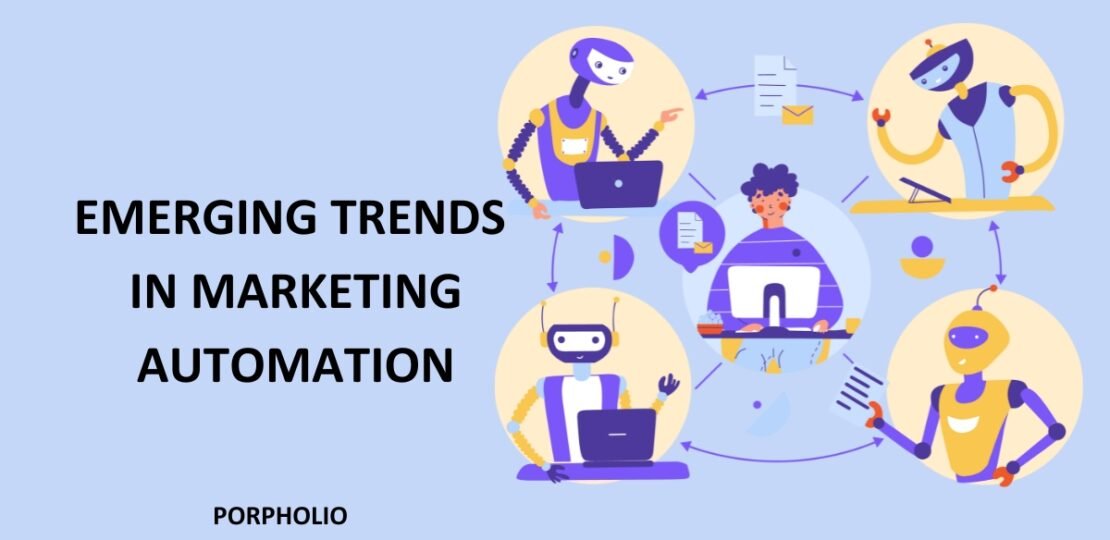Emerging Trends in Marketing Automation for 2025: What’s Shaping the Future
December 29, 2024 | by PTech Hub

Marketing automation continues to revolutionize how businesses engage with customers, drive revenue, and scale operations. In 2025, the field is evolving rapidly with cutting-edge technologies and strategies that push boundaries. Let’s dive into the key trends shaping marketing automation this year and beyond.
1. Hyper-Personalization with AI
AI-driven personalization is no longer a luxury—it’s a necessity. Marketing automation tools are leveraging artificial intelligence to analyze customer behavior, preferences, and past interactions, creating unique, tailored experiences for every individual.
Applications:
- Personalized product recommendations.
- Dynamic email content based on real-time customer behavior.
- Predictive analytics to anticipate customer needs.
Impact:
This level of personalization enhances engagement, improves conversion rates, and builds stronger customer loyalty.
2. Omnichannel Automation
In 2025, marketing is all about meeting customers where they are—across email, SMS, social media, websites, and even physical touchpoints. Omnichannel automation ensures a seamless customer experience across all platforms.
Examples:
- Automated workflows that combine email, SMS, and social media touchpoints.
- Retargeting campaigns that follow users across devices and channels.
- Unified customer profiles that provide a holistic view of interactions.
Impact:
A consistent, integrated customer journey increases brand trust and improves customer retention.
3. No-Code Automation Platforms
No-code platforms are empowering marketers to design and implement complex workflows without technical expertise. These tools offer intuitive drag-and-drop interfaces that simplify automation setup.
Features:
- Visual workflow builders.
- Pre-built templates for common marketing scenarios.
- Simplified integrations with CRMs, e-commerce platforms, and analytics tools.
Impact:
No-code solutions democratize marketing automation, making it accessible to smaller teams and non-technical users.
4. Conversational Marketing with AI Chatbots
AI-powered chatbots are becoming indispensable in automating real-time customer interactions. From answering FAQs to guiding customers through the sales funnel, chatbots are taking engagement to the next level.
Use Cases:
- Personalized product suggestions based on user queries.
- Automating lead qualification and data collection.
- Seamless handoffs to human agents for complex issues.
Impact:
Chatbots enhance responsiveness, improve user satisfaction, and free up human resources for high-priority tasks.
5. Sustainability-Focused Marketing Automation
As sustainability becomes a priority for consumers, brands are leveraging automation to align with eco-conscious values.
Applications:
- Automated campaigns promoting eco-friendly products or practices.
- Tools to track and report on sustainable marketing efforts.
- AI insights to reduce waste in digital ad spend and content production.
Impact:
Sustainability-focused marketing enhances brand reputation and aligns businesses with growing consumer demand for eco-conscious practices.
6. Predictive and Prescriptive Analytics
Marketing automation platforms in 2025 are not just tracking what happened but predicting what will happen—and prescribing actions to achieve better outcomes.
Applications:
- Forecasting customer behavior to optimize campaigns.
- Identifying high-value leads for personalized targeting.
- Providing actionable recommendations to improve ROI.
Impact:
These analytics empower marketers to make data-driven decisions that maximize efficiency and revenue.
7. Advanced Customer Segmentation
Static segmentation is giving way to dynamic, behavior-driven segmentation that evolves with customers over time.
Features:
- AI-powered tools that automatically adjust segments based on real-time data.
- Micro-segmentation for ultra-specific targeting.
- Behavioral tracking to refine customer personas.
Impact:
Dynamic segmentation ensures highly relevant marketing messages, leading to increased engagement and higher conversions.
8. Integration with Emerging Technologies
Marketing automation tools are integrating with emerging technologies like IoT, AR/VR, and blockchain to deliver next-level experiences.
Examples:
- IoT-enabled devices triggering automated campaigns (e.g., a smart fridge reminding users to restock).
- AR-powered product demos integrated into automated email campaigns.
- Blockchain-enhanced tools for secure, transparent data collection.
Impact:
These integrations provide immersive and innovative customer experiences while enhancing trust and security.
9. Voice Search and Automation
With voice assistants becoming ubiquitous, marketing automation is adapting to optimize for voice search and conversational interactions.
Applications:
- Automating content tailored for voice search queries.
- Integrating voice assistants into customer workflows (e.g., placing orders or checking account balances).
- Voice-activated drip campaigns for smart devices.
Impact:
Voice search automation opens up new avenues for connecting with audiences in a hands-free, intuitive way.
10. Ethical and Privacy-Centric Automation
With growing concerns around data privacy, automation tools are adopting privacy-first approaches to ensure compliance and build consumer trust.
Features:
- Tools to automate consent management and compliance with GDPR, CCPA, and other regulations.
- Enhanced data encryption and anonymization processes.
- Transparency in data usage, giving users control over their information.
Impact:
Ethical automation enhances trust and helps brands avoid costly legal pitfalls.
Conclusion
The trends shaping marketing automation in 2025 are driven by advancements in AI, evolving consumer expectations, and a growing emphasis on personalization and privacy. Businesses that adopt these trends will gain a competitive edge, delivering exceptional customer experiences while maximizing efficiency and ROI.
As marketing automation becomes smarter and more accessible, now is the time to embrace these innovations and prepare for a future of seamless, scalable marketing.
